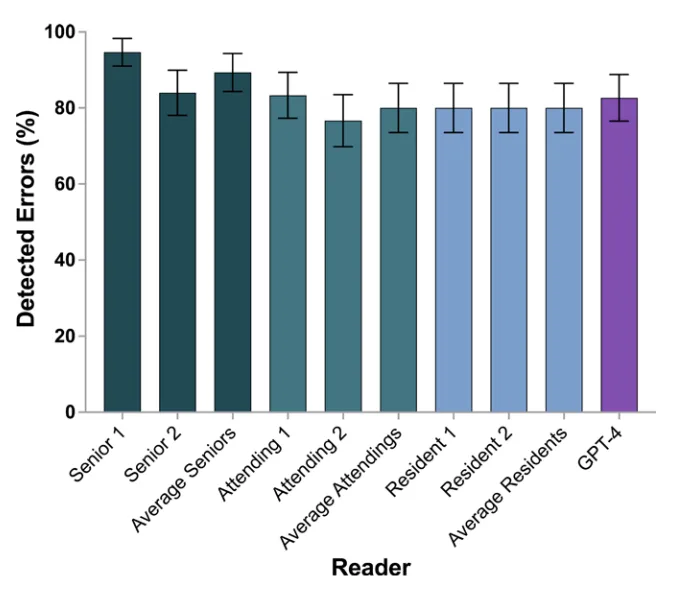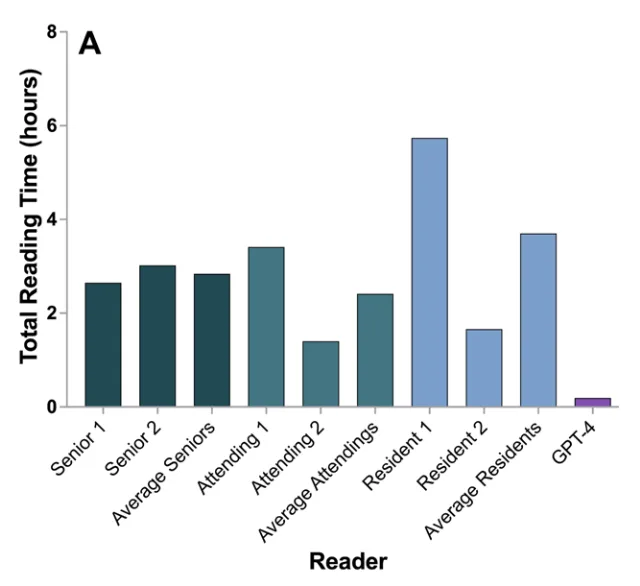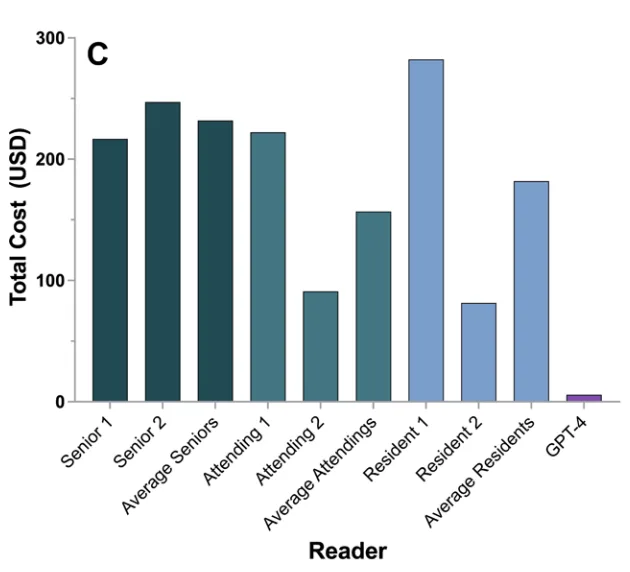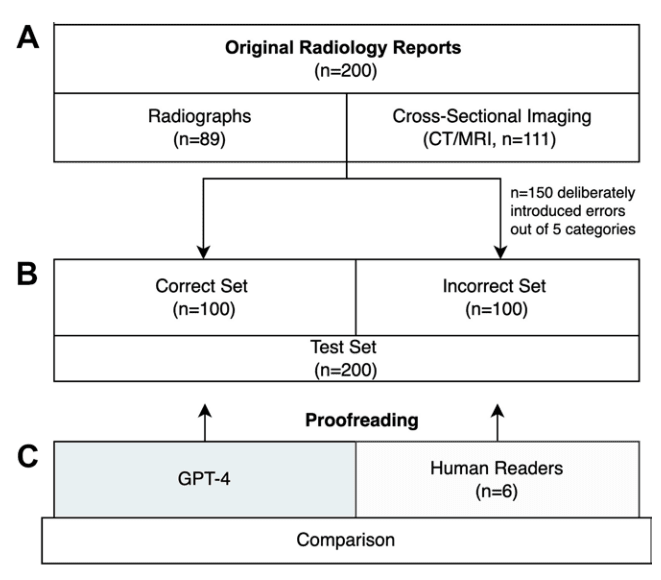GPT-4 Matches Radiologist Accuracy in Identifying Report Errors

In the ever-evolving field of radiology, maintaining accuracy in diagnostic reporting is paramount. The introduction of GPT-4, a powerful AI from OpenAI, into the radiology department is transforming how diagnostic accuracy is achieved.
A recent study confirms that GPT-4 can detect errors in radiology reports with an accuracy rate that matches that of seasoned radiologists.
This capability is pivotal, as the researchers noted, "GPT-4 matched the performance of senior radiologists with an error detection rate of approximately 83%, demonstrating its potential to revolutionize radiology diagnostics."
In-depth Analysis of GPT-4's Capabilities:
- Error Detection Proficiency: GPT-4’s near-perfect alignment with the detection rates of senior radiologists underscores its reliability and potential as a diagnostic tool. The AI's adeptness at identifying common and uncommon errors alike ensures comprehensive report evaluations.

- Enhanced Speed and Efficiency: Processing radiology reports at unprecedented speeds, GPT-4 reduces the time from diagnosis to treatment decision, which is crucial for patient outcomes. The study highlighted the significant time efficiency, with AI processing each report in about 3.5 seconds compared to the fastest human radiologist at 25 seconds.

- Cost Reduction and Operational Efficiency: Implementing GPT-4 in radiology reports not only saves time but also reduces operational costs. The study found a dramatic decrease in the cost per report, suggesting substantial long-term savings for medical facilities.

Beyond Error Detection: The Educational and Operational Benefits
- Educational Tool: For medical residents and less experienced radiologists, GPT-4 serves as an invaluable educational tool. By demonstrating error detection in real-time, it provides immediate feedback that is crucial for learning and professional development.
- Operational Improvement: By integrating GPT-4 into their workflow, radiology departments can improve their overall efficiency. This AI technology can handle routine tasks, allowing radiologists to focus more on complex cases and patient interaction, which can lead to better job satisfaction and reduced burnout.
Study Conduct
The study was designed to evaluate GPT-4's effectiveness in a controlled setting, where researchers conducted a retrospective analysis on 200 radiology reports, which included a mix of radiography and cross-sectional imaging (CT and MRI).
They intentionally introduced errors into 100 of these reports to create a control set for assessing error detection effectiveness. The performance of GPT-4 was compared against six radiologists (comprising two senior radiologists, two attending physicians, and two residents) in identifying these errors.
This method allowed for a direct comparison of GPT-4's capabilities with human experts in a controlled, clinical-like setting.

As AI technologies like GPT-4 continue to develop, their integration into medical practices such as radiology will only deepen. These tools are set to redefine the standards of medical diagnostics, improving not only the speed and cost but also the accuracy of medical reporting.
At X-ray Interpreter, we remain committed to embracing these innovations, ensuring that our diagnostics are not only fast and cost-effective but also precise and reliable.
References
- Roman J. Gertz et al. “Potential of GPT-4 for Detecting Errors in Radiology Reports: Implications for Reporting Accuracy.” Radiology. April 16, 2024. diseases.